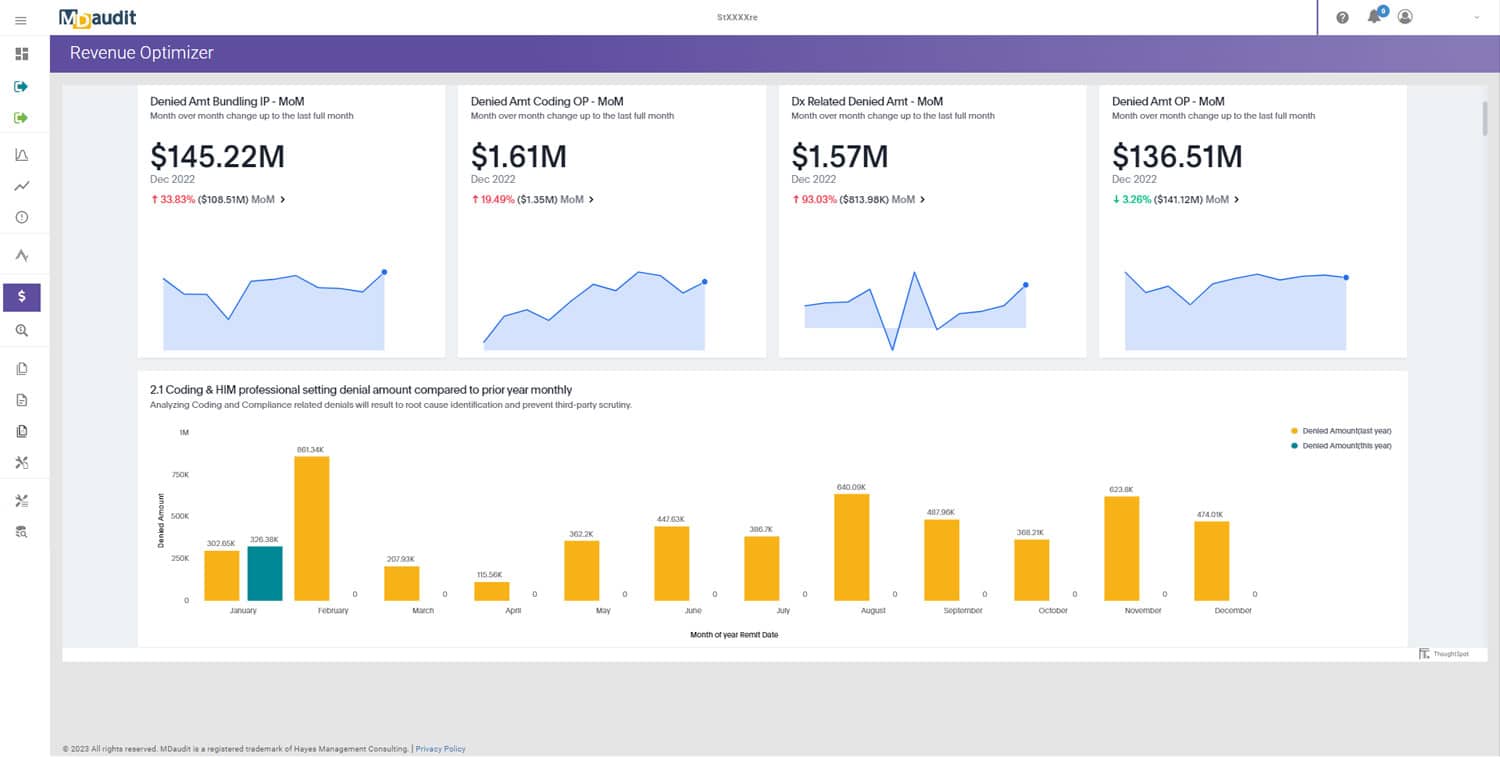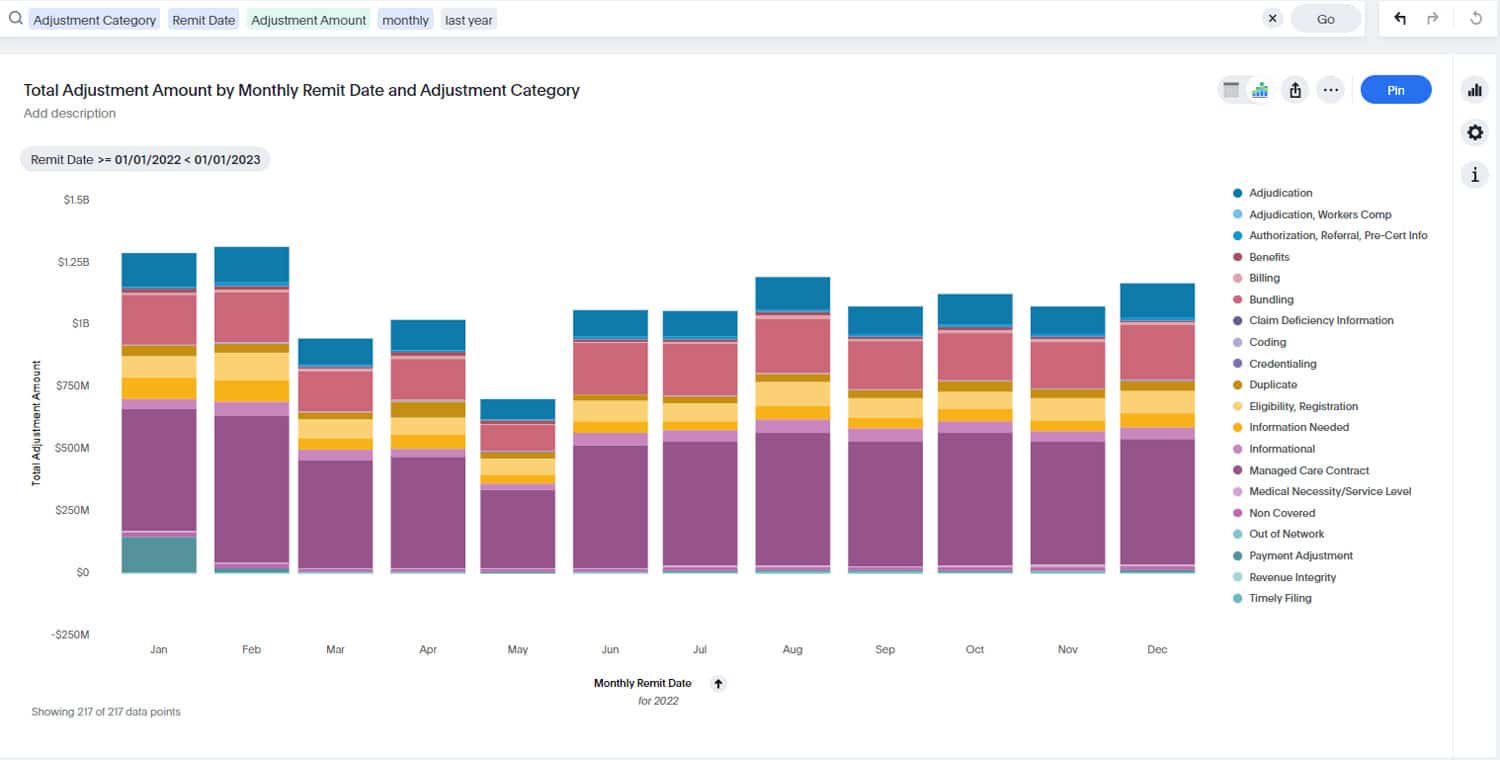In healthcare revenue cycle management, risk is constant, but it rarely announces itself. New payer policies, fluctuating patient volumes, evolving clinical practices, and shifting documentation standards all introduce fresh vulnerabilities into billing and compliance. For most organizations, audits identify these risks only after they have materialized, often in the form of denials, lost reimbursement, or compliance findings. By then, financial and operational damage is already done.
Predictive analytics changes this paradigm. By examining patterns across billing, coding, audit, and payer data, MDaudit empowers teams to forecast where future audit hotspots are likely to emerge. Instead of reacting to denials and audit findings, organizations can anticipate them — taking preventive action before they escalate into revenue loss or compliance exposure.
Our vision for AI at MDaudit has always been about augmenting, not replacing, human judgment. Predictive analytics is a prime example of this philosophy: data-driven insights surface potential risks, and experienced professionals decide how to act. The result is faster, more informed decisions, fewer surprises, and a stronger, more resilient revenue cycle.
Why predictive analytics is essential for modern audit programs
Traditional audit programs are inherently retrospective. Teams review a sample of claims or documentation, identify errors, and issue findings. While this remains important, it struggles to keep pace with today’s complex revenue cycle.
Predictive analytics offers three critical advantages:
- Anticipating payer denials
By analyzing historical denial data, payer behaviors, and documentation patterns, predictive models can flag which claim categories are most likely to draw scrutiny in the future. Teams can proactively review those areas instead of waiting for denials to accumulate. - Targeting education before issues recur
Rather than identifying problems after multiple denials, predictive analytics highlights where providers and coders need guidance before errors compound. This accelerates education and improves first-pass yield. - Optimizing audit resources
Audit capacity is always limited. Predictive forecasts enable compliance and revenue integrity leaders to focus staff where risk is emerging, not just where it has already appeared.
These advantages transform audit strategy from backward-looking to forward-focused. As outlined in our blog on proactively employing risk-based audits, prioritization is critical. Predictive analytics strengthens that prioritization by forecasting what is likely to come next.
How predictive analytics works inside MDaudit
Prediction begins with data. MDaudit automates the ingestion of billing, coding, audit, and denial data from across the organization, creating a comprehensive dataset for analysis. AI-driven models then identify patterns and anomalies that signal where risk is forming.
Key factors include:
- Historical denial trends by payer and claim type
Which services consistently drive denials? What documentation or coding gaps are most common? - Provider and coder variation
Are certain providers coding more aggressively than their peers? Are new coders showing patterns that suggest elevated audit risk? - Volume anomalies
Sudden spikes in services, diagnostic tests, or high-cost drug administrations often attract payer scrutiny. - Regulatory and policy changes
Incorporating new payer rules and CMS updates ensures forecasts reflect the latest compliance environment. - Audit outcomes
Results from internal and external audits continuously feed back into the models, making predictions smarter over time.
Our Denials Predictor is built on these principles. It provides clear, actionable explanations of why a claim is likely to be denied. This transparency ensures predictions are trusted and can be acted upon with confidence.
From prediction to prevention: real-world applications
Predictive analytics is not just about identifying possible risks — it’s about acting on them. Here are common scenarios where prediction translates into measurable value:
-
Pharmacy and drug claims
Predictive models highlight a rising risk of denials for infusion therapies tied to specific payer policies. By preparing documentation and coding guidance in advance, revenue integrity teams prevent denials before claims are submitted, protecting millions in reimbursement.
-
Provider-specific anomalies
Forecasting shows that a group of providers is coding at higher levels than peers in the same specialty. Instead of waiting for payer audits, internal teams proactively review cases, validate documentation, and provide targeted education, reducing both denial risk and compliance exposure.
-
Inpatient DRG downgrades
By analyzing prior patterns of DRG downgrades, the system anticipates increased payer focus on certain MCC codes. Audit teams ensure thorough supporting documentation before claims go out, reducing rework and appeal volume. Our post on effectively managing DRG downgrades with technology explains why this forward-looking approach is critical.
Embedding predictive insights into daily workflows
Predictions have the greatest impact when they are integrated into daily audit and revenue cycle operations. MDaudit makes predictive insights actionable by embedding them directly into:
- Audit planning
Teams can select providers, coders, or service lines for review based on predicted risk, not just retrospective findings. - Real-time triage
Findings are prioritized by predicted financial and compliance impact, ensuring limited resources are used effectively. - Automated follow-ups
When predictions materialize, tasks and education pathways are triggered automatically. Our audit workflows ensure every follow-up is structured, trackable, and repeatable. - Revenue integrity reporting
Predictive insights flow into Revenue Optimizer, allowing leaders to quantify financial impact and demonstrate the value of prevention.
Embedding forecasts into workflow turns them into concrete actions that improve outcomes across billing compliance, revenue integrity, and HIM/coding functions.
Predictive analytics in action: case examples
While every organization is different, the following scenarios illustrate the practical benefits:
- Midwestern health system
Predictive analysis flagged a rising denial trend for cardiology diagnostics. Targeted education reduced errors by 35% in the next quarter, saving over $1.8 million. - Large integrated delivery network
Denials Predictor forecasted elevated risk for infusion drug claims. Teams updated documentation protocols and prevented a projected $2.3 million in denials. - Academic medical center
Predictive models identified new coders with significantly higher denial rates. Proactive audits and education reduced coding-related denials by 42% within six months.
These examples reflect a common theme: prediction provides foresight, and foresight empowers prevention.
Linking prediction to coder and provider education
Forecasts are only as valuable as the actions they inform. For HIM and coding leaders, predictive analytics is a powerful tool to shape education programs.
When forecasts reveal likely problem areas, leaders can design targeted education for specific coders or provider groups. This approach prevents errors before they spread and builds sustainable coding accuracy.
Our HIM & coding solutions make this easy, connecting predictive insights directly to coder audits, rebuttals, and education workflows. By embedding prediction into coder education, organizations reduce repeat errors, improve compliance, and accelerate cash flow.
Governance: ensuring predictive analytics delivers
Implementing predictive analytics requires clear governance. Without structure, forecasts risk becoming unused data points. We recommend:
- Ownership — Define who maintains predictive models, updates routing rules, and validates forecasts.
- SLA definitions — Set service levels for acting on predictions, ensuring timely follow-up.
- Escalation protocols — Create clear paths when predicted risks are high-value or time-sensitive.
- Education feedback loops — Ensure forecasts trigger education and measure whether education reduces future risk.
Our guidance on building a fully functional revenue integrity team emphasizes that predictive analytics is a capability embedded in people, processes, and governance.
not just technology.
The human factor: AI as an assistant, not a replacement
We believe AI should accelerate decision-making, not remove humans from the loop. Predictive analytics surfaces patterns, but experts determine how to act. This principle is central to our blog on effective AI in healthcare RCM.
For example, if predictions show elevated risk in orthopedic procedures, it is the auditor who reviews documentation, validates whether coding is appropriate, and collaborates with providers. AI accelerates discovery; people drive judgment.
Measuring outcomes
Predictive analytics must be measured by its impact. Success metrics include:
- Reduction in denial volume for predicted categories
- Improvement in first-pass yield
- Decrease in appeal workload and cost
- Faster resolution of audit findings
- Net financial benefit across service lines
Organizations can visualize these outcomes with MDaudit’s data visualizations and reporting, linking prediction directly to measurable business results.
The future of predictive auditing
The revenue cycle will only grow more complex as payers tighten reimbursement policies, regulators expand oversight, and healthcare delivery models evolve. Prediction is a necessity, not a luxury.
At MDaudit, predictive analytics is built into the foundation of our platform. From operationalizing compliance plans to navigating denial management workflows, prediction enables organizations to stay ahead, protect revenue, and operate with confidence.
Organizations that embrace predictive analytics now are building resilience for the future — preventing denials before they happen, protecting revenue streams, and ensuring compliance in an increasingly complex landscape.





